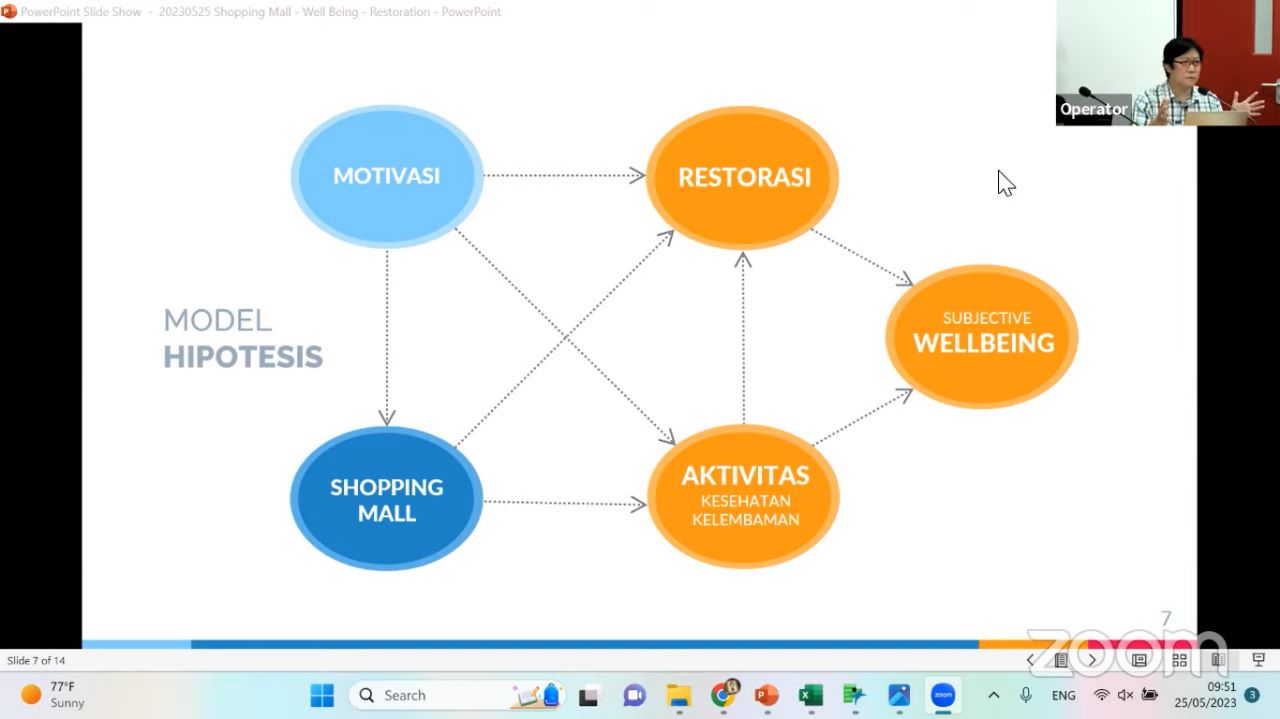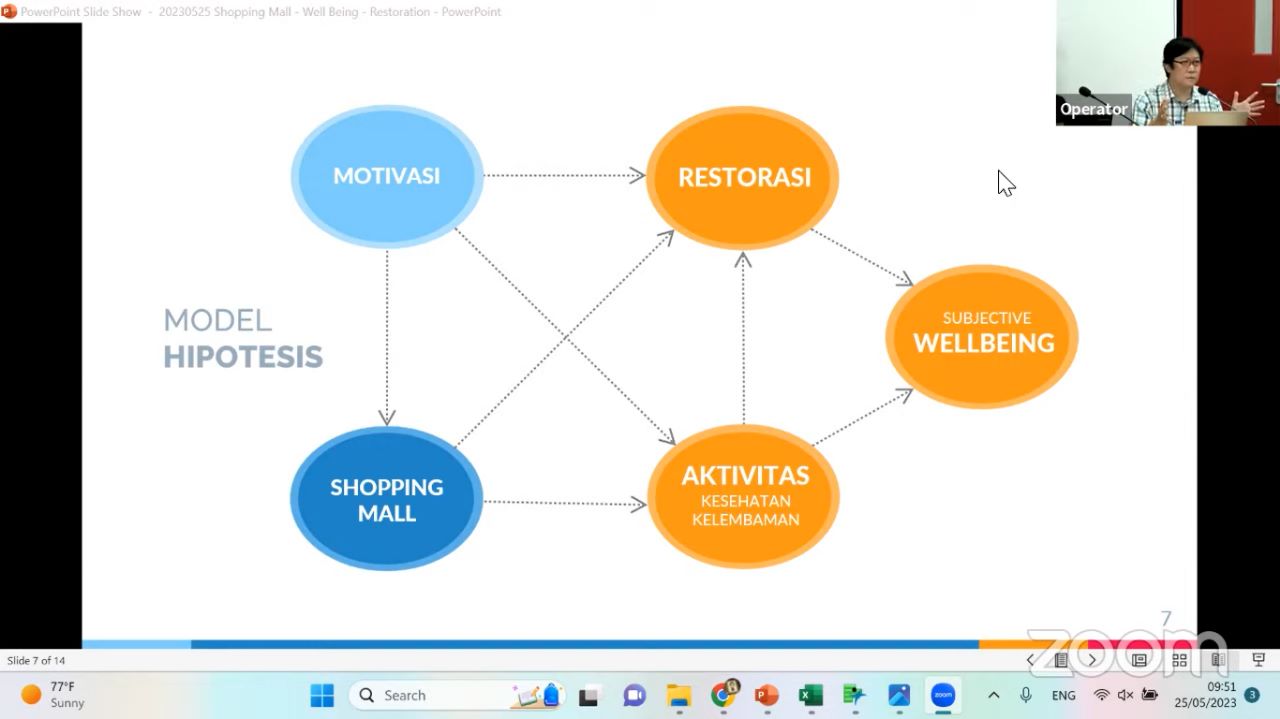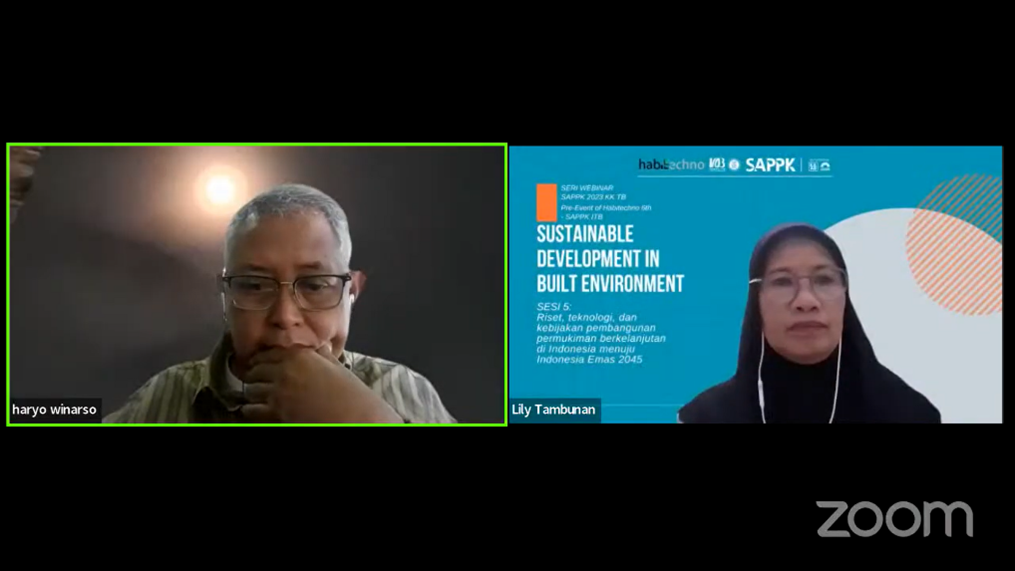SAPPD ITB Webinar: The Role of Shopping Mall for Well Being
By Adi Permana
Editor Adi Permana

BANDUNG, itb.ac.id – A team of researchers from the Architectural Design Research Group School of Architecture, Planning, and Policy Development (SAPPD) ITB researched the role of shopping malls in the well-being condition of visitors. The team members are Dr. Ir. Mochamad Prasetiyo Effendi Yasin, M.Arch., M.A.UD., Dr. Eng., Hanson Endra Kusuma, S.T., M.Eng., and Grace Siabani. The team presented their research on the SAPPD Webinar titled "The Role of Shopping Malls for Well-Being: Restorative and Health Quality Benefits" on Thursday (25/5/2023).
Dr. Prasetiyo said that the lack of physical activities in person is the world's fourth largest cause of death. The Stanford University research reveals that Indonesia has the lowest walking habit of all the 46 researched countries.
According to him, SAPPD civitas can help solve this phenomenon by designing a built environment that stimulates movement and physical activity. A shopping mall can be designed to have facilities that can improve well-being conditions, including physical, mental, social, environmental, and social health, through an integrated space concept.
"This futuristic mall model we proposed must include the spaces needed for physical, recreational, social, and spiritual needs and satisfaction. In Indonesia, some malls have already fulfilled those four aspects but still separated, and no concept integrates those concepts," he said.

The research reveals the correlation between direct and indirect causes and effects of visitor motivation, shopping mall characteristics, restorative perception, activities, and Subjective Well-Being (SWB). This analysis was done quantitatively on 240 sample shopping mall visitors among university students in Bandung.
The result is that SWB, or the feeling of joy obtained from shopping malls, is impacted by a person restorative-wise in the form of a feeling of complacency. The functional characteristics and the comfort of the shopping mall itself stimulate this refreshing perspective.
Dr. Hason then explained that the activities that directly impact SWB or visitors' happiness are leisure activities directly impacted by the shopping mall's design characteristics. On the other hand, the design characteristics also stimulate visitors' motivation regarding social interaction, recreation, and shopping. "This research was carried out subjectively. The results are still hypothesized; we need more confirmations and replications," said Hanson.

Those variables' research results will be considered in the design of new shopping malls that seek to improve visitors' well-being.
In addition, the distinctive aspects of the shopping malls, visitors' motivation, restorative perception, and available activities need to be considered when designing a shopping mall that can provide its visitor's needs and satisfaction.
"The implications of this research towards shopping mall design are varied. Its design implementation opportunities are quite wide. How much floor area should be used for recreation or social interaction? How many percent for commerce? All of those still need further research," said Hanson.
Reporter: Hanifa Juliana (District and City Planning, 2020)
Translator: Favian Aldilla R (Civil Engineering, 2019)

.jpg)
.jpg)

.jpg)
.jpg)

